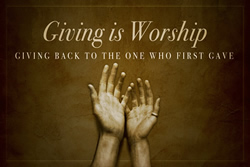
Introduction to Leviticus
An Introduction to Leviticus
Date of the book
If we examine the context of the books of Exodus and Leviticus, we see Leviticus follows the exodus of the Israelites from Egypt. Israel's camp wasn't moving; this was training time to learn how to offer the sacrifices the LORD required.
Authorship of Leviticus
Moses gave verbal instructions and then wrote the procedures dictated by God. Afterward, he showed the people and priests how to do them. Moses is the composer of the manual.
The name
Levi was the tribe God appointed to serve as priests and servants to the Israelites. Leviticus describes their work and the congregation's responsibilities regarding the various offerings to God.
The theme of the book

Holiness is the theme of Leviticus. Holiness is a state of absolute righteousness, without sin or anything impure or unclean. The word holy describes God and the best of things devoted totally to him. People who appear before him must also be holy. How could anyone achieve that? Only with God's help. The LORD accepted the Israelites when they turned from their sins, demonstrating their faith by bringing unblemished sacrifices to him as he required. When they did this, they met God's demands for holiness and drew near to him in a personal relationship.
The teacher's manual
A noted theologian, A.F. Rainey, observes that the Levitical sacrifices were separated by three different orders.
- Leviticus 1:1–6:7 was the didactic order, the order taught to the individuals who brought the offerings (Leviticus 1:2; 4:2). The primary emphasis was the responsibility of the individual regarding his offerings.
- Leviticus 6:8–7:38 was the administrative order for the priests (6:9). It answers the question, “what do we do with the offerings when we receive them?”
- Leviticus 8:14-32 and 9:1-24 deal with the standard procedural order for offering sacrifices. The regular procedural order was sin and guilt offerings, followed by burnt, grain, and fellowship offerings or peace offerings.
The practical application of holiness is the topic we will cover in the last half of Leviticus.
The nature of the sacrifices
The offerings to the Israelite God (LORD or Jehovah) were not for appeasing anger or currying favor with him. In most cases, the offerings were required for making amends (atonement) for the Israelite sins. By substitution, a representative of each family shed an animal's blood in place of their lives. Therefore, the animals brought had to be worthy of God, perfect, without blemish or spot because the LORD is that way.
When they offered the sacrifices in obedience, God forgave the Israelites' sins and wiped them out (atoned for them). He restored their relationship to him.
The unblemished and spotless sacrifice also typified Christ, the perfect Lamb of God (John 1:29; 1Peter 1:18-19), who was righteous and without sin. He gave his life for us to offer us forgiveness and restore our relationship to God.Cleanliness and purity
The Israelites were to eat clean animals (those approved by God). The people themselves must stay clean or free from disease, bodily discharges, and other contaminations. Their homes and clothing must remain free from mildew. Why? These guidelines and restrictions were given for their health and their holiness. God said, “You must keep the Israelites separate from things that make them unclean, so they will not die in their uncleanness for defiling my dwelling place, which is among them.” (Leviticus 15:31, NIV).
The Israelites were expected to be holy people, separated from all evil and uncleanness and separated to their most holy God—the LORD was going to dwell among them.
How do we view God and our relationship with him? Although today we do not observe his stringent requirements of clean food, bodies, houses, and clothing, God is still as holy as he was then. He is set apart as wholly pure and undefiled, yet he desires to dwell within us (John 1:14). The Lord is preparing a perfect place for us to live in heaven (1Peter 1:4), and some day he will come to dwell with us on a new or rejuvenated earth (Revelation 21:1-3).Is holiness possible?
How can we possibly be holy? We are human and sinful! The writer of the book of Hebrews says that Jesus became a high priest to offer himself as a perfect sacrifice for our sins. “Such a high priest meets our need—one who is holy, blameless, pure, set apart from sinners, exalted above the heavens” (Hebrews 7:26, NIV). Jesus died in our place, was buried, and rose again from the dead for our salvation. If we accept his payment for our sins, God makes us righteous, spiritually clean, and pure (holy).
How do we stay holy?
As Christians, we should separate from evil practices and even the appearance of evil (1Thessalonians 5:22). Through the power of the Holy Spirit, we must live pure lives separated to the LORD. We should “offer our bodies as living sacrifices, holy and pleasing to God” (Romans 12:1, NIV). The Apostle Peter instructs, “But just as he who called you is holy, so be holy in all you do” 1Peter 1:15, NIV).
Of course, no one is perfect, so we must confess our sin to the LORD to receive cleansing and forgiveness (1John 1:9). When we separate ourselves unto God, we are in his realm and experience his joy!
Leviticus can be tedious to read, and the sacrificial procedures no longer apply because they symbolize things to come. Still, these symbols are rich with meaning and help us understand our need for Christ's salvation, his cleansing, and God's holiness. We will be glad we read this book.
(“Sacrifice and Offerings, ” The Zondervan Pictorial Encyclopedia of the Bible , © 1975, vol 4, pp. 201-3).
Use browser arrow to return to last spot on previous page
Return to today's Bible study
Back to top of page
Go to Chronological Bible Studies main page
Go to Scriptures main page
Go to Topics main page
re-edited 2-16-23
COPYRIGHT @ 2019, MASTER'S TOUCH BIBLE STUDIES



